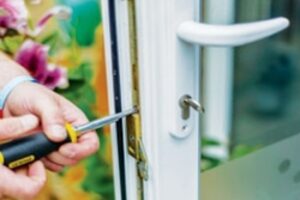3 Reasons Three Reasons Your Interior Door Locks Replacement Is Broken (And How To Repair It)
Interior Door Locks Replacement: A Comprehensive Guide
Interior door locks serve more than just a practical purpose— they are essential for ensuring personal privacy and security in numerous spaces within a home. Gradually, locks may end up being inefficient or completely fail. Whether latch lock replacement to wear and tear or outdated style, replacing these locks is required and can improve both security and looks. This post walks you through the process of interior door lock replacement, displaying crucial elements to consider, and attending to frequently asked questions.
Why Replace Interior Door Locks?
Replacing interior door locks can be important for a number of factors:
- Security: Old or damaged locks can be quickly picked or broken, jeopardizing the security of your home.
- Privacy: Faulty locks might not offer the required personal privacy, specifically in bedrooms and bathrooms.
- Aesthetic Appeal: New locks can update the look of your doors and home overall.
- Performance: Worn locks may no longer operate correctly, causing disappointment.
Kinds Of Interior Door Locks
Before thinking about a replacement, it's vital to comprehend the types of interior door locks offered:
- Knob Locks: These are the most typical type and are simple to set up and utilize.
- Lever Handle Locks: Often seen in commercial spaces, these locks are accessible for all ages and abilities.
- Deadbolts: While more typically utilized on exterior doors, they can likewise supply additional security for interior doors.
- Personal privacy Locks: These are ideal for restrooms and bedrooms, allowing locking from the within only.
- Electronic Locks: Modern locks that utilize keypads or smart gadgets for higher security and benefit.
Table 1: Comparison of Interior Door Locks
Lock Type
Security Level
Ease of Installation
Cost Range
Suitable Location
Knob Locks
Moderate
Easy
₤ 10 – ₤ 50
Main rooms, offices
Lever Handle Locks
Moderate
Moderate
₤ 15 – ₤ 70
Hallways, commercial
Deadbolts
High
Moderate
₤ 25 – ₤ 100
Bed rooms, restrooms
Privacy Locks
Low to Moderate
Easy
₤ 10 – ₤ 40
Restrooms, bed rooms
Electronic Locks
High
Complex
₤ 50 – ₤ 300
Houses, offices, hotels
Actions for Replacing an Interior Door Lock
Changing an interior door lock might seem daunting, but it is an uncomplicated procedure if approached methodically. Here's a detailed guide:
Tools and Materials Needed:
- New lockset
- Screwdriver (flathead and Phillips)
- Tape step
- Hammer
- Chisel (if necessary)
- Level
Actions:
Remove the Existing Lock:
- Use a screwdriver to remove the screws from the existing lock faceplate.
- Pull the door handle and the lock cylinder out from the door.
Procedure the Door:
- Before buying a new lock, measure the thickness of the door, the range from the edge of the door to the center of the knob hole, and the range from the top of the door to the center of the lock.
Set Up the New Lock:
- Follow the manufacturer's directions specific to the new lockset.
- Place the new latch into the door's edge; you may need to change with a sculpt to guarantee a correct fit.
- Connect the exterior handle, ensuring it lines up properly with the interior handle.
Check the Lock:
- Before completing the installation, test the lock for smooth operation.
Completing Touches:
- Once validated, tighten up all screws and apply any ornamental plates that might include your new lock.
Tips for Successful Lock Replacement:
- Always use safety goggles to safeguard your eyes from dust and particles.
- Ensure that the new lock is suitable with the existing hole sizes to avoid unneeded modifications.
- If you're unknown with lock replacement, seek advice from with an expert.
FAQs About Interior Door Locks Replacement
Q1: How frequently should I replace interior door locks?
A1: It's a good idea to examine and potentially change your interior door locks every 5 to 7 years, or quicker if you experience any issues.
Q2: Can I replace the locks myself, or should I employ an expert?
A2: Many property owners can replace locks themselves, however if you're unpredictable about the process or encounter problems, employing a locksmith is sensible.
Q3: How do I select the ideal kind of lock for my requirements?
A3: Consider elements like the level of security wanted, ease of access, and door use before picking a lock type.
Q4: Are electronic locks more secure than traditional locks?
A4: Generally, electronic locks offer higher security features, such as keyless entry and anti-picking technology, but they also require power and can be more intricate to install.
Q5: What should I do if the new lock doesn't fit effectively?
A5: If the new lock does not fit, you might need to adjust the holes with a sculpt or speak with a professional for help.
Replacing interior door locks is not just a matter of security and privacy but also of improving the total visual appeal of your home. Comprehending the types, tools required, and the step-by-step procedures included can empower homeowners to perform the replacement efficiently. Whether picking an easy knob lock or a modern electronic alternative, guaranteeing the locks are functional and secure is basic for any family.
